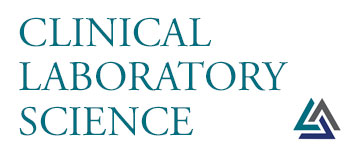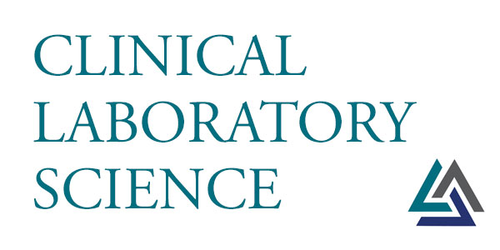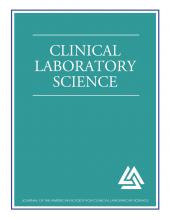This article requires a subscription to view the full text. If you have a subscription you may use the login form below to view the article. Access to this article can also be purchased.
- Deborah Josko, MS CLS(M)⇑
- Address for correspondence: Deborah Josko MS CLS(M), Assistant Professor, University of Medicine and Dentistry of New Jersey, School of Health Related Professions, Department of Clinical Laboratory Science, 65 Bergen Street, Newark NJ 07107. (973) 972-5578, (973) 972-8527 (fax). joskotda{at}umdnj.edu
See learning objectives #1 through #7 on page 40.
Extract
Yersinia pestis, the causative agent of plague, is an aerobic, non-motile, gram-negative bacillus belonging to the family Enterobacteriacea. It is a zoonotic infection transmitted to humans via the bite of a flea. Three clinical forms of human plague exist: bubonic, pneumonic, and septicemic. Many important virulence factors associated with this organism are responsible for its extreme pathogenicity and high mortality rates. The bubonic form of plague is usually not transmitted human to human but the pneumonic form is — through inhalation of contaminated aerosol droplets. The pneumonic plague would be the form most likely implicated in the event of an intentional attack. Inhalation of aerosols can cause devastating consequences resulting in many casualties. Unless antibiotics are administered within 24 hours of the initial symptoms, death is inevitable. Its potential for use as a biological weapon is of major concern to public health officials.
Yersinia pestis, the causative agent of plague, is an aerobic, non-motile, gram-negative bacillus belonging to the family Enterobacteriacea. It is approximately 0.5 to 0.8 μm in width by 1 to 3 μm in length 1,2 and demonstrates bipolar staining (closed safety pin appearance) with Giemsa, Wright's, or Wayson stains.1,3 The characteristic bipolar staining is usually not visible when stained with Gram Stain.1 Colonies are grey-white, pinpoint, and non-hemolytic on sheep blood agar after 24 hours of incubation. It is catalase positive, and oxidase and urease negative. Although it grows at 35 °C to 37 °C, its optimal growth is room temperature, approximately 28 °C.1-3
The first outbreak…
ABBREVIATIONS: BCE = before the common era; BSL = biosafety levels; CDC = Centers for Disease Control and Prevention; CE = common era; ELISA = enzyme-linked immunosorbent assay; EMB = eosin methylene blue agar; MAC = MacConkey agar; WHO = World Health Organization; Yops = Yersinia outer proteins.
See learning objectives #1 through #7 on page 40.
- © Copyright 2004 American Society for Clinical Laboratory Science Inc. All rights reserved.






